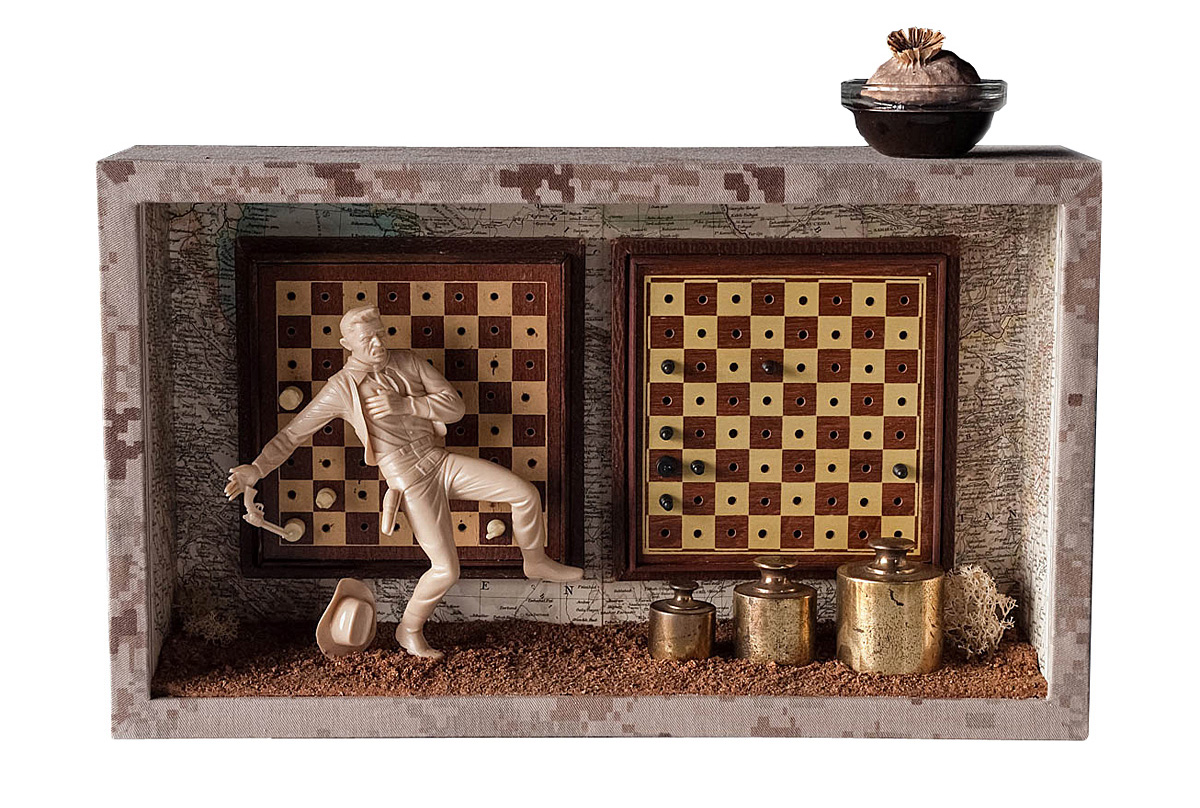The origin of the shadow box finds its roots in naval history. When a retiring seaman was leaving his ship for the last time, if his shadow touched land before he stepped ashore, it was considered an omen that terrible luck would follow.
At the outset, a shadow box was a very literally named item. It was a box in which crewmen would place objects meant to represent the sailor’s shadow. With its attendant superstition, it was thought important to protect departing comrades from risk by creating the shadow box, usually a small wooden box containing personal effects – a metaphor for the sailor’s shadow. The ritual has the retiring seaman carrying the shadow box as he passed from sea to land, thus insuring a safe transition into his new life ashore.
American artist Joseph Cornell (1903 – 1972) was a pioneer of assemblage and collage, working with found objects, trinkets and curiosities and is most closely associated with the visually poetic works of art that he created as shadow boxes. A collector of bric-a-brac, souvenirs and memorabilia – old prints and photographs, magazine clippings, music scores and printed ephemera, Cornell’s boxes explored surrealist use of irrational juxtaposition; transforming materials and experience to realize compositions, much like the sailor’s shadow box, that would provide passage to another world, to another shore.
In the spirit of sailors of yore, Joseph Cornell and those that followed, I think of the boxes that I make as a window on another world, a conduit through which passage to another time and place is preserved.










